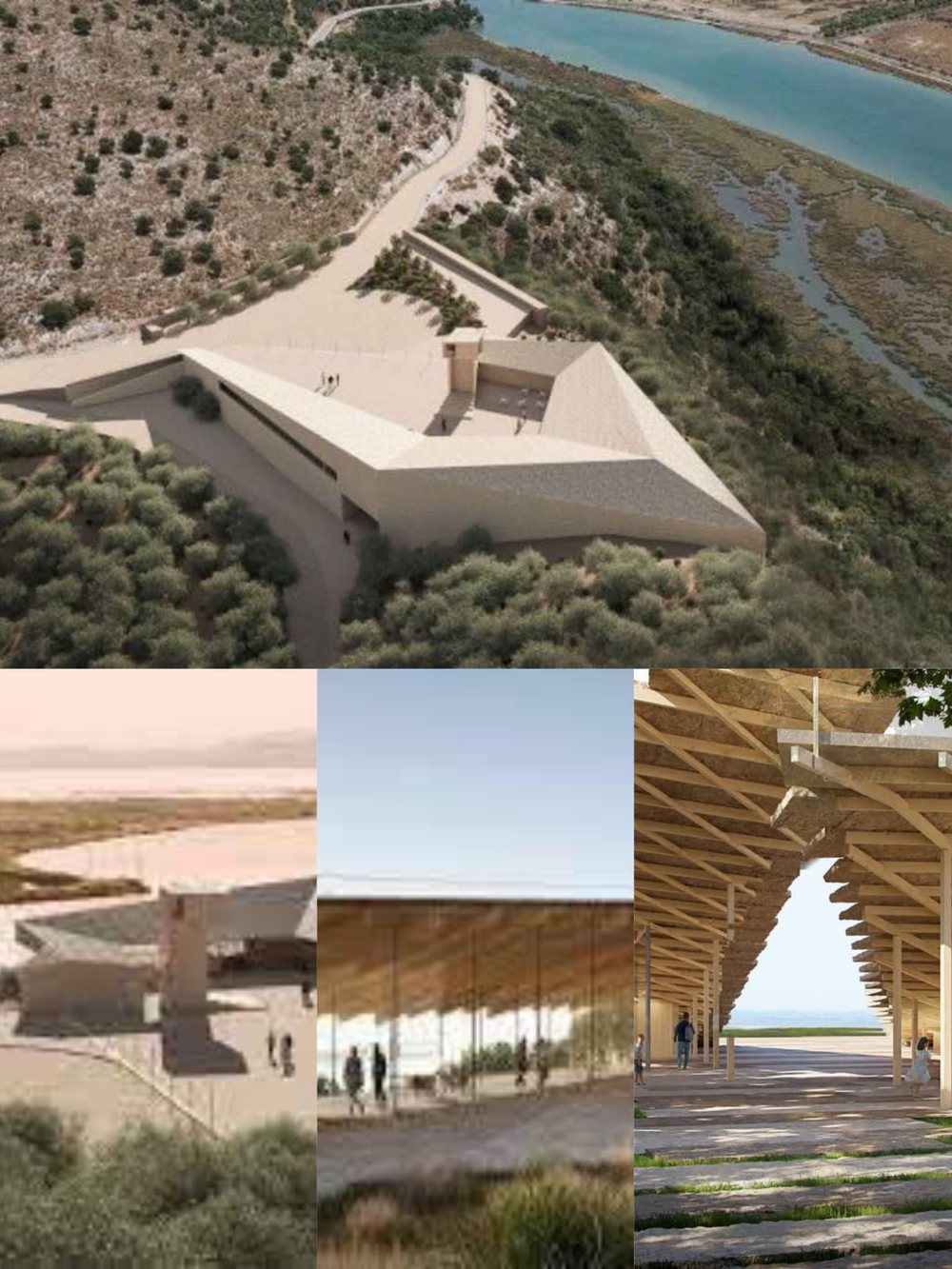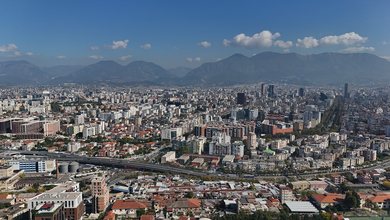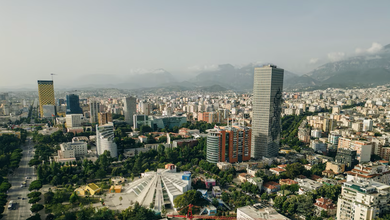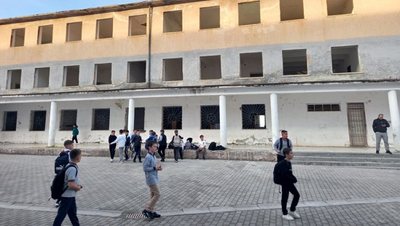
Swedish architect Peter Hallen - lecturer at the Royal Academy of Stockholm and the architect who designed Cape Merlin and several buildings in Tirana, as well as Liza Fior - lecturer at the University of the Arts in London, raise concerns that the Japanese project risks irreversibly damaging the historical landscape of the archaeological site, a UNESCO world heritage site.
Japanese Architect: "Lost in Meaning"
Recently, Japanese architect Kengo Kuma's project was selected as the winner in an architectural competition for the construction of a visitor center in Butrint, a UNESCO World Heritage site in southern Albania.
Perhaps Kuma, perhaps just perhaps, misunderstood the way we in the West treat the remains of historic buildings – due to differences in approach to restoration and perhaps even in respect for historic fragments of buildings, which to the untrained eye may not seem so impressive.
As a Swedish architect who has worked extensively in Albania and as a great admirer of both countries – Albania and Japan – I feel inspired to reflect on this Japanese project for Butrint.
On my first visit I fell in love with Butrint – not only for historical reasons, but also for the landscape itself.
A place where fresh water and salt water meet, attracting people since the beginning of time – water to drink and food to eat...
There I experienced a wonderful concert of 16th-century music by the “Romeo and Juliet” choir of Ingemar Bergman's Royal Dramatic Theater in Stockholm.
Another time, I saw a famous Russian ballerina risking her precious legs and calves, braving the rain along with other Bolshoi dancers.
I bought local food and handicrafts made there. I had a picnic, explored on foot and by boat.
I love that place...
Kengo Kuma's background
Kuma's father, also an architect, adored modern architecture and was particularly impressed by Kenzo Tange, in whose footsteps he followed.
Kuma saw something special in Tange's designs that did not exist in others: the ability to create Japanese symbolism through the technology of the time.
He was impressed by the way Tange combined Japanese tradition with a contemporary vocabulary. Kuma has even stated that Kenzo Tange and his buildings are among the reasons he became an architect in the first place.
Symbolic architecture is the art of using architecture to represent an abstract idea.
Kuma's philosophy
In theory, Kengo Kuma's choice for a project in the Butrint landscape is brilliant, as he is known for his use of natural materials to create contemporary spaces, as well as for the close connection between architecture, the natural world, and local communities.
His architectural philosophy is based on the idea of integrating buildings with their surrounding environment, emphasizing the use of materials that reflect the local context and culture.
"My method is to avoid heroic gestures, because it reaches a point where heroism kills the beauty of the material," he says bluntly.
“My buildings are always part of the place, part of the location. I want to merge them with the environment as best I can. Harmony is always the goal of my practice,” says Kuma.
From the way he talks about his goals and architectural philosophy, it's clear that he's perfect for the task!
And yet, what he thinks and what he says do not match what he has proposed for Butrint. How can this be?
As we think about this, I want to focus on another project in a historical context – that of architect Dimitris Pikionis at the Acropolis of Athens, Greece.
Pikionis and the Acropolis
At the Acropolis, Pikionis joined a commission overseeing road improvements around the archaeological site in 1951.
He insisted that such a project had to be understood as a “work of art,” where predetermined forms and prevailing modes of architecture could not be applied. Maximum care had to be taken with every detail.
He took responsibility for placing each stone of the paths in an area of 80,000 m². Pikionis assembled the paths from found and recycled materials: stones from the site itself, combined with ancient fragments, but also with remains from neoclassical Athenian palaces that were being demolished to be replaced by concrete buildings.
Pikionis' drawings display a deep ambivalence: most of the project is not defined on paper, but only imagined.
It is not primarily visual, but topographical.
In the field, the elements were decided through conversation with the craftsmen.
He invited us to find what he called the "ineffable."
In a Socratic manner, Pikionis valued the spoken word more than the written word.
Only the country itself can verify the proposal – something he called “obedience to the country”.
His low-tech architecture with raw materials, delicately integrated into the site, had at its center the relationship with nature.
Recovery, not restoration
In Tokyo, I was shocked to see that the building I had come specifically from the airport to see – Toyo Ito's famous Nomad restaurant – was being destroyed before my eyes.
How was this possible?
When I asked for answers in Japan, some linked it to the high prices of buildable land, others to a lower level of respect for the existing facility.
But perhaps we can find another explanation in the architecture of Japanese temples.
Japan has developed an original strategy to combat the erosion of monuments: periodic reconstruction.
Once every twenty years, the old buildings of Ise Shrine are used as models before being completely demolished, to be rebuilt from scratch on an adjacent plot.
This practice has been documented since the 6th century.
So, from the earliest historical periods, a building in Japan could be rebuilt several decades later, in another place, on a different scale, using different materials or partially renovated.
These reconstruction practices are different from “preservation” or “restoration” in the modern sense and are more akin to “restitution” – the restoration of the spirit of the original through its physical rebirth.
Could this be a clue to understanding the grand scale that Kuma proposes for Butrint?
I personally see Butrint as a small-scale, sometimes even miniature place – the fortresses look like models for child soldiers, for challenging games.
It is precisely this intimate scale that, in my opinion, makes Butrint special – the small theater and the impressive basilica, side by side, generation after generation, in the same place.
As my friend, London architect Liza Fior, said:
“We really appreciated the informality of nature and history – the flooded mosaic floors and the trees twisting around the stones.”
“The existing ruins are like a series of rooms, some connected and some not, and this is completely at odds with the grandeur and uniqueness of the proposed new structure,” says Liza.






















